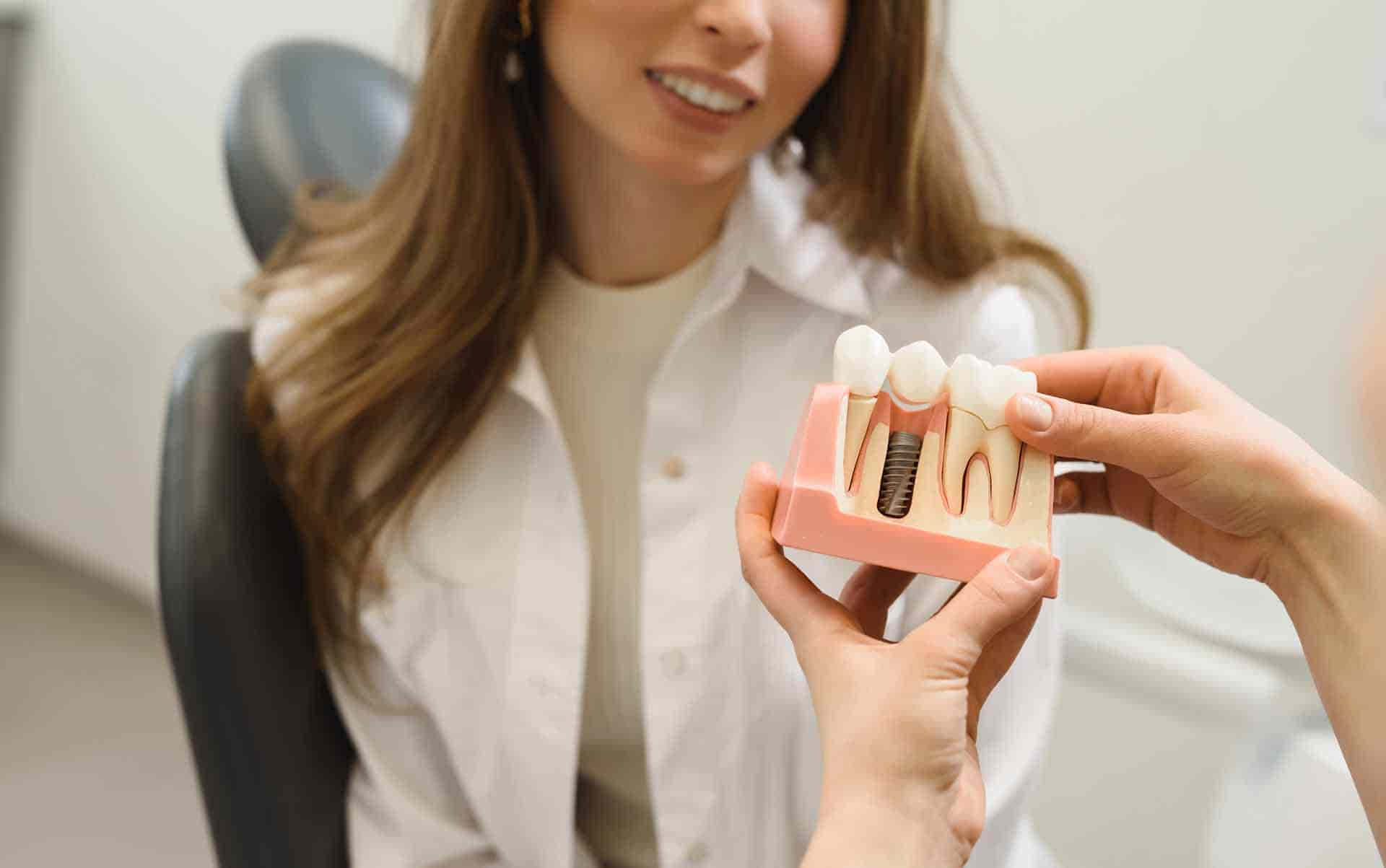Can Orthodontics Improve a Misaligned Jaw?
June 2025
Did you know? A misaligned jaw can cause chronic headaches, ear pain, difficulty chewing, and even lead to temporomandibular joint (TMJ) disorders. Most people think orthodontics is only for straightening teeth. But the truth is, orthodontics can also improve jaw alignment in ways that bring relief, balance, and long-term health.
Let’s explore the question: can orthodontics improve a misaligned jaw and how the right treatment can help you regain comfort and function.
Early Signs You Might Have a Misaligned Jaw
Many people live with jaw misalignment without even realizing it. They often mistake the signs for something minor, like stress or tooth sensitivity. However, early signs include headaches, difficulty chewing, or feeling like your teeth don’t meet evenly when you close your mouth. In some cases, your jaw may shift to one side when you open wide. These subtle issues may point to a deeper problem that orthodontic care can fix before it gets worse.
What Causes Jaw Misalignment?
A misaligned jaw occurs when the upper and lower jaw don’t meet correctly. This might be because of genetics, injury, habits like thumb-sucking, or early loss of baby teeth. The result can be an open bite, underbite, overbite, or crossbite. Over time, this misalignment puts stress on the jaw joints and muscles, leading to pain and discomfort.
That’s where orthodontics steps in, not just to shift your teeth, but to help bring your teeth and jaw into proper alignment. With advancements in orthodontic solutions, even alternatives like OrthoFX clear aligners offer innovative, comfortable options for realignment.
Can Braces Fix Jaw Alignment in Adults?
Yes, braces can fix jaw alignment in adults and not just teens. Many adults choose braces or clear aligners to improve how their teeth and jaw fit together. Braces work by applying gentle, continuous pressure that gradually moves both teeth and jaw into better positions.
Depending on the case, your orthodontist may use traditional braces, Invisalign, or combine braces with other tools like jaw expanders or rubber bands.
Braces Jaw Expander and Other Tools That Help
In cases where the jaw is too narrow or crowded, orthodontists may use a jaw expander. This device slowly widens the upper jaw, helping to fix bite issues and create more space for proper alignment.
Other devices like elastics (rubber bands) are used with braces to guide the upper and lower jaw into a more balanced position.
For some complex cases, especially those involving facial asymmetry or severe misalignment, orthognathic surgery may be recommended in combination with braces. But in many cases, orthodontic treatment alone is enough to correct the jaw.
Braces for Jaw Alignment Before and After:
Before treatment, patients often deal with difficulty chewing, speech problems, or even a noticeable jaw shift. But with the right treatment plan, orthodontics can play a crucial role in correcting these issues.
How do braces fix misaligned jaw? After treatment, the jaw becomes properly aligned, reducing pain and improving facial appearance. Many patients also notice improvements in their confidence, oral health, and quality of life.
Can Invisalign Fix Jaw Alignment?
Yes, in many mild to moderate cases, Invisalign can fix jaw alignment by using clear, custom-fit trays that move your teeth and jaw gradually. These trays are removable, nearly invisible, and comfortable to wear.
However, Invisalign may not be suitable for severe cases. Your orthodontist will help decide the right approach for your condition.
How Orthodontics Enhance Your Facial Appearance
Braces don't just fix teeth, they can subtly reshape your face for a more balanced, natural look. Here's how:
- Improves Jaw Symmetry
By correcting bite issues, braces align the upper and lower jaw, reducing unevenness that may cause the face to look off-balance. - Supports Better Lip Posture
When teeth are properly aligned, the lips rest more comfortably, giving the face a more relaxed and proportionate appearance. - Defines the Chin and Jawline
Braces help position the jaw correctly, which can enhance the definition of your chin and reduce the look of an overbite or underbite. - Balances the Cheek Structure
Crooked teeth and a misaligned jaw can cause the cheeks to appear sunken or uneven. Braces restore harmony by bringing facial muscles and bones into alignment. - Boosts Overall Facial Harmony
The final result is a more symmetrical, attractive facial structure that complements your features and boosts self-esteem.
Jaw Alignment Without Surgery: Is It Possible?
Many patients ask if it’s possible to fix a misaligned jaw without surgery. The answer depends on how severe the condition is. Minor to moderate cases can often be treated with braces, jaw alignment devices, or other non-invasive options.
Severe misalignments might need surgical help, but thanks to modern orthodontics, surgery is no longer the only answer.
Your Treatment Plan Matters
Every jaw is unique, which is why the orthodontists at Raio Dental take the time to create personalized treatment plans tailored to your specific jaw alignment issues and overall oral health. Whether your case requires traditional braces, clear aligners, or the use of palatal expanders, each option is carefully chosen to ensure the best results for your bite and smile. The goal is not just to straighten teeth but to improve how your jaw functions, reduce discomfort, and promote long-term oral health. With a custom approach, you receive care that matches your needs and lifestyle, making your journey to a healthier jaw smooth and effective.
Let’s Realign Your Smile
So, can orthodontics improve a misaligned jaw? Absolutely. With the right care, you can reduce pain, improve function, and achieve a more balanced facial structure. Don’t wait until the problem gets worse.
Ready to realign your jaw and feel the positive changes in your smile and overall well-being? Explore interceptive orthodontics in New York with Raio Dental. Our expert team is here to guide you through every step of the process toward achieving a properly aligned jaw and a smile you can be proud of. Don’t wait—start your journey today toward a healthier bite and better facial harmony.

All-on-X Implants vs. Traditional Dentures: Pros and Cons
October 2025When considering tooth replacement options, many patients wonder about All-on-X Implants vs. Traditional Dentures: Pros and Cons. Both solutions can restore a full arch of teeth, improve oral health, and ...
Maintenance & Aftercare of All-on-X Implants
October 2025Maintenance & Aftercare of All-on-X Implants is essential to ensure the long-term success of your full-arch dental restoration. All-on-X implants offer a stable, durable solution for patients missing multiple teeth, ...
Can a Night Guard Help With Snoring?
September 2025Snoring is a common issue that affects both the person snoring and their sleep partner. For some, it's just a minor nuisance, but for others, it can signal an underlying ...
How to Reduce Swelling After Oral Surgery
September 2025Swelling is one of the most common side effects after oral surgery. Whether you've had your wisdom teeth removed, a tooth extraction, or another procedure, swelling is part of the ...
Can TMJ Cause Dizziness? Understanding the Link Between Jaw Disorders and Balance
August 2025Do you ever feel lightheaded for no clear reason? Struggle with sudden dizziness when standing up or turning your head? Feel off-balance even when everything else seems normal? These symptoms ...
Can Orthodontics Improve a Misaligned Jaw?
September 2025Did you know? A misaligned jaw can cause chronic headaches, ear pain, difficulty chewing, and even lead to temporomandibular joint (TMJ) disorders. Most people think orthodontics is only for straightening ...
What Happens If You Drink Alcohol After Fluoride Treatment?
June 2025Did you know fluoride treatments can reduce tooth decay by nearly 25%? That's why many people include it in their regular dental visits. But once the treatment is done, you ...
Traditional Dentures vs Implant Supported Dentures: Which One is Right for You?
May 2025Did you know? Nearly 41 million Americans wear dentures, but studies show that people with implant-supported dentures report significantly higher satisfaction—especially when it comes to comfort, eating, and speaking. (Source: Journal of ...
Porcelain vs Composite Fillings: A Dentist’s Guide to Choosing the Best Option
March 2025If you've ever had a cavity, you know how important dental fillings are in restoring your smile and protecting your teeth. However, when it comes to choosing the right filling ...
Are Dental Implants Considered Cosmetic or Necessary for Oral Health?
February 2025If you're missing a tooth, you've probably wondered: Are dental implants considered cosmetic, or are they essential for oral health? It’s a common question, especially since many insurance companies classify ...
What Is a Periodontal Maintenance and Why Is It Important for Oral Health?
January 2025If you've been diagnosed with periodontal disease, you're not alone—nearly 47% of adults over 30 in the U.S. suffer from some form of gum disease. While routine cleanings work for ...
























